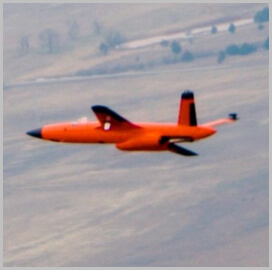Shield AI, a venture-backed defense technology company, has conducted its first multi-jet autonomy flights, marking a significant development in its pursuit of global autonomy.
The company said Wednesday it achieved the milestone using two MQM-178 Firejets from Kratos Defense & Security Solutions, a technology, products, system and software company.
The flight tests were conducted using two autonomous agents controlled by Shield AI’s Hivemind AI Pilot. The agents managed to execute coordinated maneuvers and demonstrate operationally relevant collaborative behaviors.
Through the demonstration, Shield AI showcased the potential of future unmanned jets and drones that can be flown with all computing done onboard and in-air agent communication seamlessly integrated.
Brandon Tseng, president and co-founder of Shield AI, believes that AI pilots will be capable of flying autonomous systems in the near future and that the recently concluded flight tests is a major step in attaining that goal.
“In the next decade, AI pilots will command and maneuver all unmanned systems, enabling the US and our allies to deploy millions of intelligent, resilient drones,” said the former Navy SEAL. “These Firejet flight tests represent a key milestone on our journey to bring autonomy to the world. What’s awesome is that the algorithms are not limited to the number of aircraft. For test objectives and budgetary reasons, we limited the number of Firejets to 2, but it could have been 4, 8, 16, 32, and so on.”
This recent development follows several AI-piloted Firejet flight tests conducted earlier in the year, marking the sixth time an aircraft was flown using the Hivemind AI Pilot. The company also concluded the first Live Virtual Constructive integration last June. This simulation connected live platforms with virtual environments enabling dynamic interactions across different domains.
Shield AI and Kratos previously worked together on a similar project in 2023. It involved an AI pilot incorporated into the Kratos XQ-58 Valkyrie.
Catch government and industry speakers discuss international partnerships, coalition warfare and emerging technologies at the GovCon International Summit. Register here.






